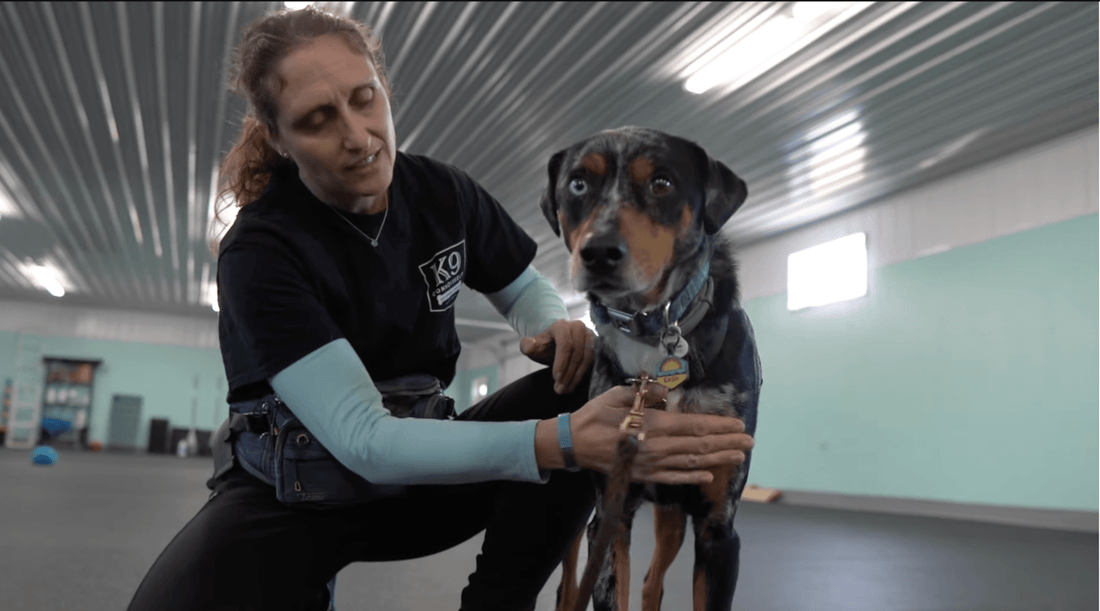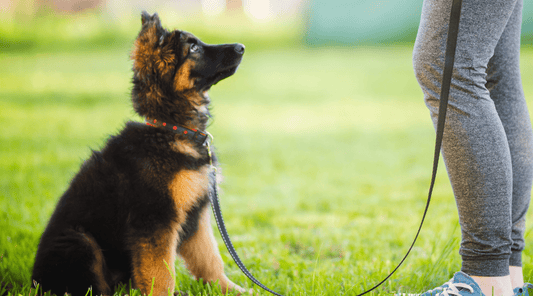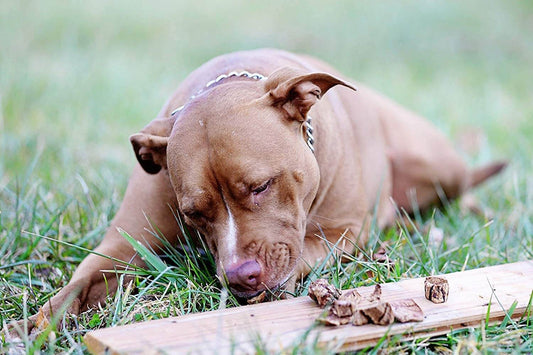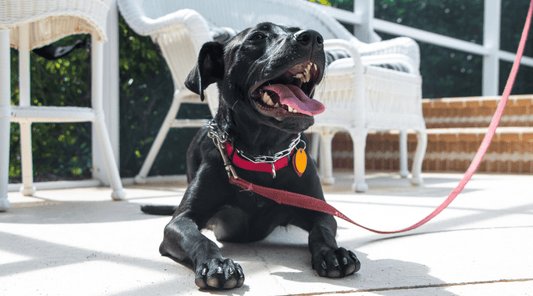
Dog Training Collars: A Guide for Responsible Pet Parents
Dawn Miller Feb 21, 20254 Minute ReadLast weekend, during our neighborhood dog meet-up, the topic of dog training collars sparked quite a debate—no pun intended. As we watched our dogs play in my big backyard, we discussed the various types of collars and their roles in training. We weighed the pros and cons. It reminded me how training techniques can vary and the importance of using training tools correctly.
Types of Dog Training Collars
Talking with my neighbors, I was surprised to learn that so many training collar types exist. Each one is carefully designed to help dog trainers and pet parents quickly and adequately train their pups.
Collars typically fall into two broad categories: those used for aversive training (teaching a dog how to avoid pain or discomfort) and those used for positive reinforcement training.
Flat Dog Training Collars
These are standard collars with a buckle or snap closure. They're ideal for everyday use with leash-trained dogs.
These collars maximize everyday comfort—and sometimes style. They hold ID tags so that lost dogs can find their way home.
When it comes to training, they work well for dogs who don't pull excessively.
Martingale Collars
Some dogs have narrow head-to-neck ratios, which allow them to escape standard flat collars by pulling backward. These dogs also tend to be brilliant and will learn about this loophole in collar design quickly.
So, narrow-headed breeds like Greyhounds, Great Danes, Dobermans, and Whippets may benefit from martingale collars. These collars tighten slightly when the dog pulls. Even though some people call these "choke collars," which sounds cruel, they are designed to prevent choking. Many dog trainers say they are necessary for these dog breeds.
They offer more control than flat collars without the risks associated with choke chains.
Choke Chains
While some would say this is not a collar, it's used instead of one. So, I'd have to disagree.
It's a collar-leash chain combo with metal links looped around a dog's neck.
Choke chains tighten around the dog's neck when pulled. They can cause injury if misused and are generally not recommended for your everyday dog parents.
Prong or Pinch Collars
These feature metal prongs that press into the dog's neck when tensioned to discourage pulling. They use discomfort to teach a dog how to act. Misusing or working with a very aggressive or frightened dog can lead to injury.
Their use is controversial, so it's essential for you to weigh your goals and the pros and cons.
Shock Collars (E-Collars)
These deliver an electric stimulus to the dog at varying energy levels and are often used for behavior modification.
Many experts advise against their use due to potential physical and psychological harm.
More modern and potentially humane shock collars use sound warning, then shock. This allows the dog to stop at the warning and avoid the shock. Dog perimeter fences often work on this principle.
With that said, they still have to learn what the warning means; they will be shocked.
Head Halters
It fits around the dog's muzzle and neck. Head halters provide control by steering the dog's head. They require a proper introduction to prevent discomfort and terror. They can be used effectively by experienced trainers.
No-Pull Harnesses
These harnesses have a front leash attachment that discourages pulling by redirecting the dog's movement. They are a humane alternative to collars that choke or shock and allow smaller-statured humans like me to manage larger dogs because they give me leverage from the dog's side.
Since it's attached in the front, I can pull the leash to the dog's left or right, which can make forward momentum harder.
Amanda demonstrates this technique in her video:
Are Training Collars Safe for Dogs?
They can be. The handler needs to understand how to use them correctly and commit to using them humanely. Certain collars can become dangerous when used by someone frustrated. So, it's also critical that the trainer remains patient and supportive as the dog learns.
Aversive collars, such as choke chains, prong collars, and shock collars, can cause physical injuries and increase stress or fear in dogs. Positive reinforcement methods are generally safer and more effective.
Why Use Positive Reinforcement Instead?
If you have a difficult dog, you might be at your wit's end. Whether they're stubborn, distractible, destructive, or borderline aggressive, you may think you've tried everything. Your last resort is aversion training.
I'm here to tell you that's rarely the case. Positive reward training is designed to strengthen trust between dogs and their humans. Instead of fearing you, your dog complies because they like to spend time with you. Doesn't that sound a whole lot better for your relationship?
Using high-value treats, like beef lung bites, encourages dogs to repeat good behavior because they are sometimes rewarded with treats.
Eventually, good behavior becomes a habit and is automatic.
Behavioral science is well-researched in humans and dogs, and it works. Positive reinforcement is why many people check social media several times daily, play video games, or eat their favorite foods. It's rewarding!
These activities release dopamine, the motivation hormone. In both dogs and humans, this hormone tells the brain, "If we do this, we get a reward sometimes." And we keep doing it.
How to Use Positive Reinforcement Training for Dogs
Dog training collars certainly play a role in positive training. But shock, spike, and choke collars are not necessary. Instead, you'll teach command words.
Each command word is associated with the action. When your dog performs the correct action in response to the command word, you quickly reward them with praise and a treat. Dog experts believe that dogs can learn up to 120 unique commands.
Now, you must be consistent. But with this method, you can teach dozens of basic commands in as little as 20 minutes each.
Dogs are intelligent, and they love treats.
Then, it may take a little more time to teach advanced commands. But if your dog just learns basic commands every dog should know, you're so far ahead of the game.
Having a well-trained dog gives you the freedom to take it places and let it roam off-leash at the lake.
Your dog learns what you expect, and they aim to please.
Why High-Value Treats Are So Important for Dog Training
I use high-value dog treats to quickly reinforce positive behaviors. Beef lung training treats are single ingredient—just organ meat. But it's roasted and dried, so it doesn't smell. My terrier Pixie will do backflips for these. She gets so excited about training now.
Training collars for dogs work more effectively when a dog is relaxed and ready to learn. So, it's also important to establish a dog bone chewing session routine for a well-trained dog. Dog bones can alleviate boredom, reduce destructive behavior, and help distractible dogs learn to focus.
Just imagine what it would be like to have a well-trained dog that loves and trusts you so much that you can take them out and never worry they're going to act up. You can have it all. And your dog deserves the freedom that dog training brings.
Don't miss the Free 7-Day Dog Training Challenge.
Available On:





